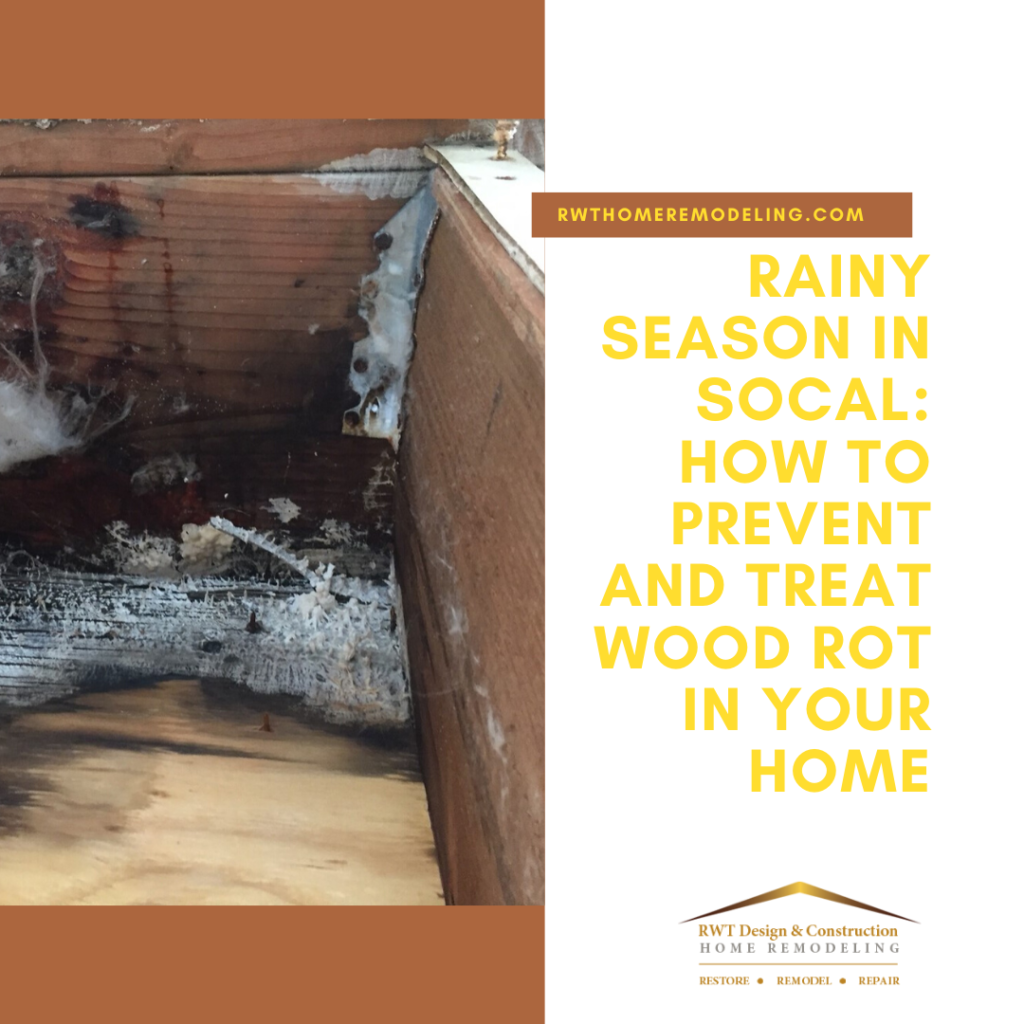Rainy Season in SoCal: How to Prevent and Treat Wood Rot in your Home

The rainy season in Los Angeles is now upon us! In recent years we’ve experienced extreme effects of the rainy season like flash floods that can bring about mudslides.
Unfortunately, we can’t control the effects of mother nature but there are some things that we can do to prevent and treat issues like wood rot caused by water damage.
What Is Wood Rot?
Wood rot is a type of fungal decay in wood. The damp wood allows the spores to establish themselves and grow using the wood as a food source.
Any time wood is allowed to get moist and stay moist, you can expect to get wood rot. Proper ventilation of wooden structures is very important, to keep fresh air blowing across the wood so that it stays dry, and wood-to-ground contact generally must be avoided, as wood which sits on the soil will eventually attract fungi, which in turn will cause wood rot.
Different Types of Wood Rot
There are two main kinds of wood rot that affect homes. These are easily distinguished by the texture and color of the damaged wood.
- White Rot attacks mainly hardwoods and causes a white or yellow discoloration by attacking the lignin in the wood. Over time, the wood will develop a spongy touch.
- Brown Rot attacks mainly softwoods and causes the wood to turn a dark brown color. Brown rot is often called “brown cubical rot” because of the way the wood can split across the grain, giving a checkerboard appearance or it may break off in cubes. Brown rot weakens wood very rapidly, causing the wood to be very dry and powdery, hence the misleading nickname “dry rot.”
Where to Find Wood Rot in your Home
Wood rot in your home can be unfortunate, but can usually be easily found. Here are the places that wood rot is usually discovered in homes:
- Attic and roof space
- Floors
- Windows and doors
- Decks and porches
- Kitchens
- Bathrooms
- Basements or crawl spaces
Some places can be hard to reach and wood rot may be undetectable by the untrained eye.
If you suspect wood rot from your home or a home you are thinking about purchasing, call a specialist out to do a full inspection for you.
How do you prevent or stop this from happening to your home?
Moisture control is the key to preventing wood decay fungi from causing rot. Most wood decay fungi need a moisture content of at least 20% to survive. There are non-chemical and chemical means of moisture control to prevent wood decay fungi.
Preventing wood rot is just as important as treating it. The key to deterrence is to control the wood’s exposure to moisture by providing adequate ventilation and water drainage.
Here are some tips for preventing wood rot and preventing it from getting worse:
- Waterproofing protection (inside and outside) – Contact us for this service
- Make sure your home is on a well-drained site and if not make it one.
- Install or make sure your home has roof overhang, gutters, etc. to prevent water from seeping under the house.
- Dehumidifiers should be used in basements with moisture levels above 50%.
- Handle any plumbing leaks quickly.
- Clean out your rain gutters regularly.
- Fix roof leaks right away.
If you notice any wood rot in your home, you should handle it right away. If it is left alone it will only grow and cause more damage to your home and be much more expensive to fix than if you handle it right away. So make sure to call an experienced contractor based in SoCal to get it fixed right away. The last thing you want to do as a homeowner is to let wood rot continue to cause damage to your home.
Also, please take a look at Structural Wood Rot for a short description of a job we were called to where we had to repair this problem.
RWT Design and Construction has been serving SoCal (Burbank, Glendale and Los Angeles) for over 30 years. If you have any questions on wood rot, water damage prevention or general construction, feel free to give us a call at (818) 841-8600.


No Comments